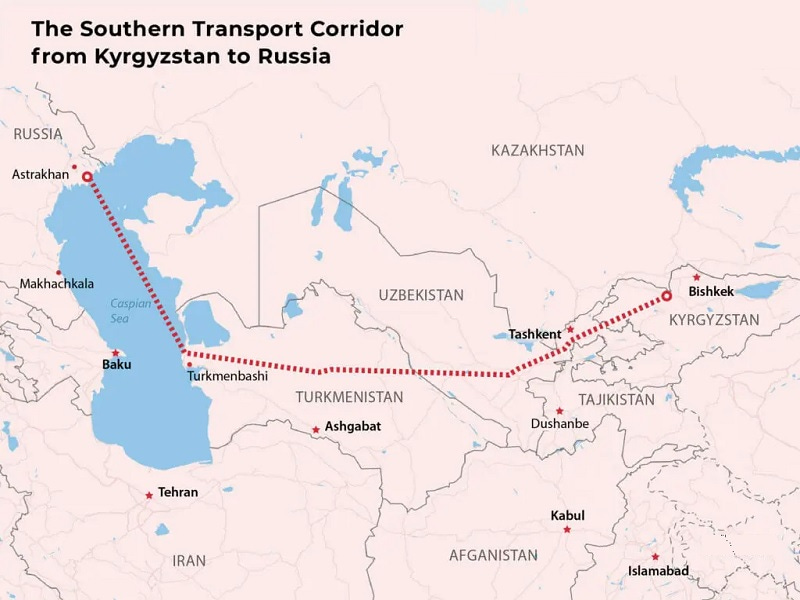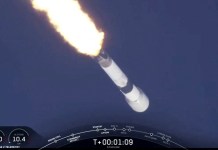After the implosion of the erstwhile Soviet Union in 1991, all five Central Asian States plus two Trans-Caspian States (Azerbaijan and Armenia) declared their independence. The Russian Federation, which replaced the Soviet Union, found a new mechanism to keep these republics as its allies in multiple ways.
In terms of economics, communication, regional security, financial transactions, and international relations, the nascent “independent three” needed time to regulate the administration along the new pattern.
The Vacuum
Neighboring powers thought there was a good chance of filling the vacuum in Central Asia. China was the most active of all and worked subtly. As the region is contiguous to its eastern province of Xinjiang, China focused on overland road and rail connectivity. Overland link with Kazakhstan was a priority knowing that the republic had rich hydrocarbon deposits. Turkmenistan, rich in gas reserves, was also on Beijing’s Central Asian agenda.
Kazakhstan has been a priority with China. After the long lockdown due to the Covid pandemic, Kazakhstan was the first country Xi Jinping visited while coming to Samarkand to participate in the SCO summit last year.
Clandestine Corridor
In an article published in the Asian Times on July 31, Robert M Cutler said in the context of the Kazakhstan-Kyrgyzstan standoff that “Kazakhstan was making an effort to halt the smuggling of dual-use goods into Russia.”
He pointed out that as a result, “a clandestine corridor has been established, passing through Kyrgyzstan and Uzbekistan, Turkmenistan and finally across the Caspian Sea before reaching Russia.” Very little is known to the outside world of this clandestine trade route that bypasses the watching eye of the imposers of sanctions on Russia.
Very few media persons knew that the heads of three Central Asian Republics, Emomali Rahman of Tajikistan, Serdar Burdimuhamedov of Turkmenistan, and Shavkat Mirziyoyev of Uzbekistan, held a summit meeting on August 4. The Presidents of Kazakhstan and Kyrgyzstan were not invited, perhaps because of their mutually soured relations.

At the end of their meeting, the triad produced a joint declaration that did not say anything about why the other two republics were not there in the meeting. The joint statement spoke about attempts to cooperate on the problems in water, electricity, and gas.
No specific measures were underlined to indicate what steps would be taken collectively to improve the situation. But these areas, no doubt of much importance, are not the only areas that have to be addressed. For example, regional security, trade and commerce, and transport infrastructure are of no small importance.
All three countries in the triad have borders touching Afghanistan to a smaller or longer length. Some countries do not like the ruling Taliban regime, but a railway line to Afghanistan is of great need for the three contiguous countries.
We do not know whether the subject figured in their deliberations. Railways from Uzbekistan could connect to Pakistan’s rail network through Afghanistan, although such a project would require representatives from Afghanistan and Russia.
The Taliban regime in Kabul has come to stay, notwithstanding some reservations expressed by the Western countries. The world will have to deal with the Taliban sooner or later because its isolation concerns the free world.
Circumventing Sanctions
Reports say that the three countries discussed activities in logistics and transit with special attention to creating a multimodal transportation route along the Tajikistan-Uzbekistan-
The narrative is about circumventing the sanctions against Russia. It is known to all that all routes leading to Russia for import or export cannot be plugged because of the peculiar geography of the region. The essential purpose of the three republics in holding a summit could be the objective of circumventing the sanctions and continuing trade relations with Russia.
It must be noted that the US monitors even the clandestine routes but may not be able to block the trade carried out along these routes. Nevertheless, Armenia, one of the two trans-Caspian republics of Central Asia, has been on the receiving end of the wrath of European countries. The EU has included Armenia on the list of sanctions against entities “directly supporting Russia’s military and industrial complex in its war in Ukraine.”
The UN data tells us that in 2022 the US and the EU exported 16 times the worth of integrated circuits to Armenia than in 2021. Armenia’s exports of ICs to Russia jumped to US$13 million in 2022 from less than 2,000 dollars in 2021.
Armenia is a client state of Russia; it is also an ally of Iran because of its dispute with Azerbaijan over Nagorno Karabakh. Like the three CARs, Armenia has become a transport and logistics hub through which dual-use goods pass into Russia.
Armenia is a member of the Russian-led Eurasian Economic Union (EAEU), of which Belarus, Kazakhstan, Uzbekistan, and Kyrgyzstan are also members, while Uzbekistan is an official observer and, like Tajikistan, has a free trade zone agreement with the EAEU. Russia depends on other EAEU members to re-export goods prohibited under sanctions.
Kazakhstan has limited transit across its territory, and, as such, Russia welcomes the trilateral cooperation of the region’s” Southern Tier.” Moscow will make decisions favoring the triad as it has done in the case of Armenia in exchange for the maintenance of this Central Asian and trans-Caspian channel to deliver sanctioned goods.
The Russian press has christened the Tajikistan-Uzbekistan-Turkmenistan route as the “Southern Transport Corridor” (STC), hoping it would overcome the obstacles created by Kazakhstan’s new regime of customs verification on its border with Russia.
It will also increase the cargo coming across the Caspian Sea from Turkmenistan to Russia’s port at Astrakhan, where Moscow has been augmenting the infrastructure in the Russian Federation’s Republic of Dagestan. Tajikistan also shares a border with China. Dual-use goods could flow directly into the STC from China or via Kyrgyzstan.
Conclusion
The “Southern Transport Corridor,” a nomenclature coined by the Russians, provides a circumventing route for transporting goods to Russian destinations. This route is safe to be used for dual-use of goods. The contemplated route is bound to enhance the trade prospect of the countries through which it passes.
Russia supports the contemplated corridor because it is a dependable circumvention of the sanctions imposed on Russia. Finding routes to circumvent the sanctions is a natural outcome of the sanctioned regime. That is why many countries, including India, do not approve of imposing sanctions as a desirable course of disciplining a defaulting nation.
- KN Pandita (Padma Shri) is the former Director of the Center of Central Asian Studies at Kashmir University. Views expressed here are of the author’s.
- Mail EurAsian Times at etdesk(at)eurasiantimes.com




